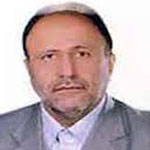The Current Status of Professional Interactions between Medical School and Teaching Hospitals from the Managers’ Point of View: A Case Study in Iran University of Medical Sciences
Training skilled doctors and the benefit the medical students receive from education, especially clinical education, depends on the realization of the goals of medical schools and teaching hospitals, which is achieved through communication and interaction between these two institutions in medical universities. These interactions are established through different policies, laws, regulations, and memorandums. This study aimed to determine the current status of professional interactions between the medical school and teaching hospitals in Iran University of Medical Sciences.
The present study was carried out in 2021 using a quantitative approach, in terms of practical purpose, descriptive method, and data collection method. Individuals from research areas, officials of the medical school, officials of the teaching hospitals, and the officials of the Iran University of Medical Sciences were selected for sampling. A total number of 105 individuals were questioned. A researcher-made questionnaire was used to collect data. Data analysis was performed using SPSS software.
According to the data analysis, the current status of professional interactions between the medical school and teaching hospitals in different areas of interaction were as follows (0 is the lowest and 10 is the highest): education and research: 5.68, governance: 4.79, financial budget: 3.83, human resources: 4.74, provision of health services: 4.55, physical resources and equipment: 4.76, and supply chain: 4.27.
Considering the current state of interactions between the Faculty of Medicine and teaching hospitals of Iran University of Medical Sciences, it was necessary to improve these interactions. Faculty members’ attention to education, adjustment of frequent treatment practices, referral of learners to teaching hospitals according to a specific program, definition of joint research projects, revision of organizational structure and powers, allocation of the required budget, holding joint workshops for employees of two institutions, fair payments, optimal application of space and educational equipment, as well as setting up dynamic monitoring systems played an important role in promoting the interactions of the two institutions.
-
The role of universities in shaping students’ character; Designing a model for developing empowering, personality, social, and ethical attitudes
H. Mokhber Dezfouli, N. Ghourchian *, K. Mohammadkhani
Interdisciplinary Studies in the Humanities, -
A Model of Ethical Capital of Principals of Non-Governmental Primary Schools in Tehran
Mehrangiz Miri Kermanshahi, Parivash Jafari *, Nader Gholi Ghorchian
Journal of Islamic Lifestyle Centered on Health,



